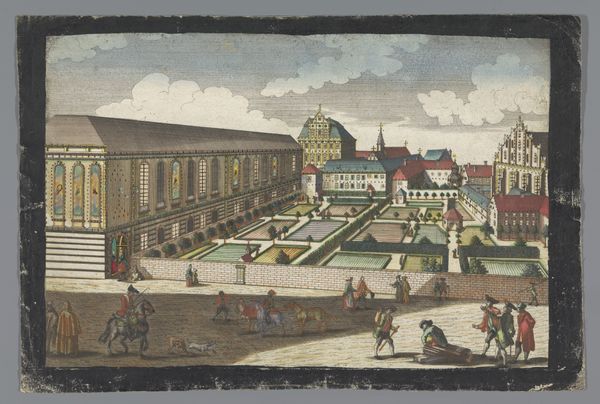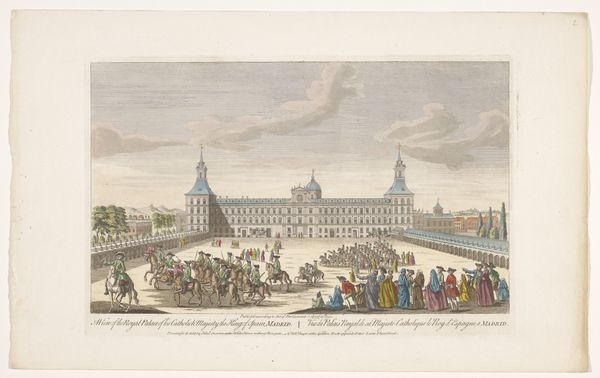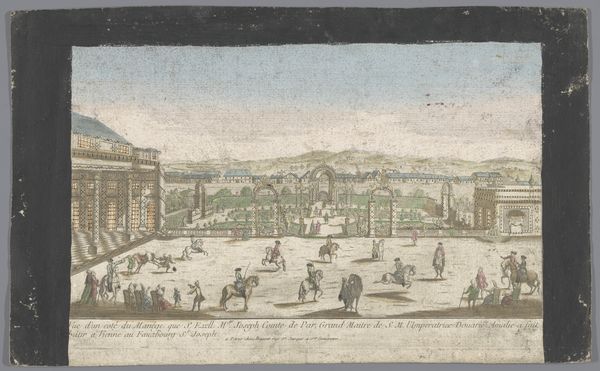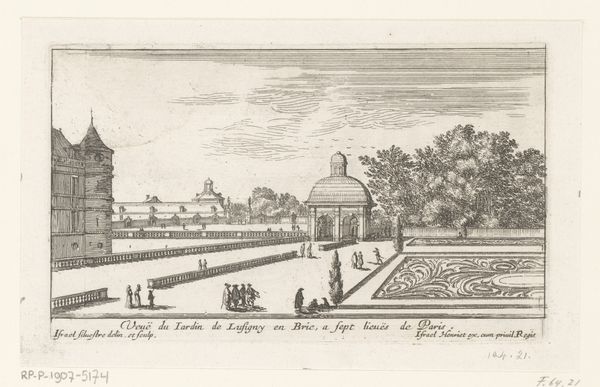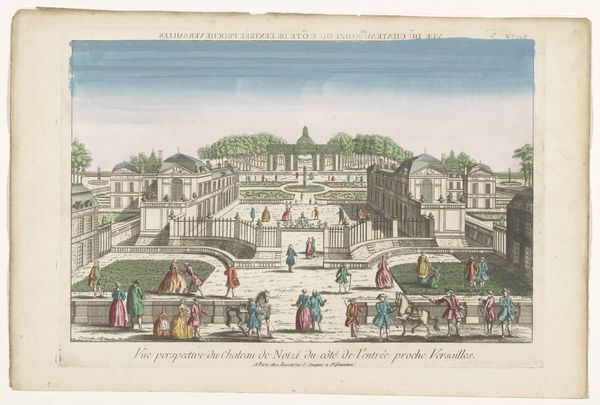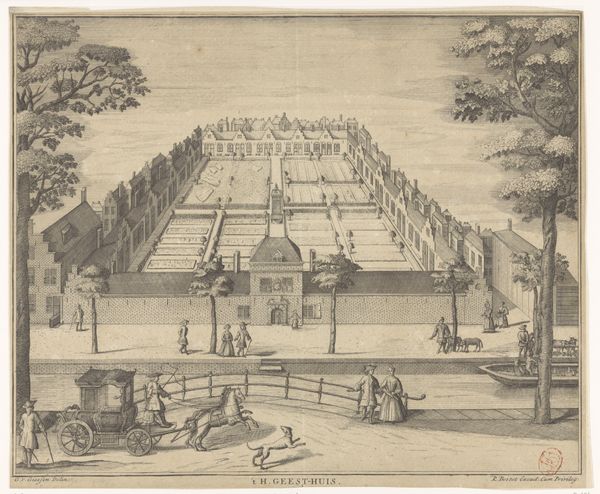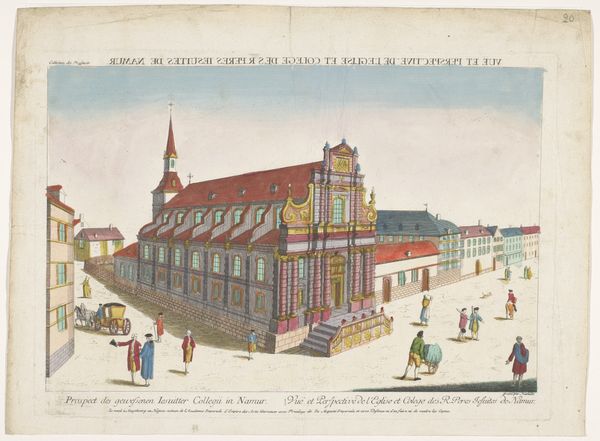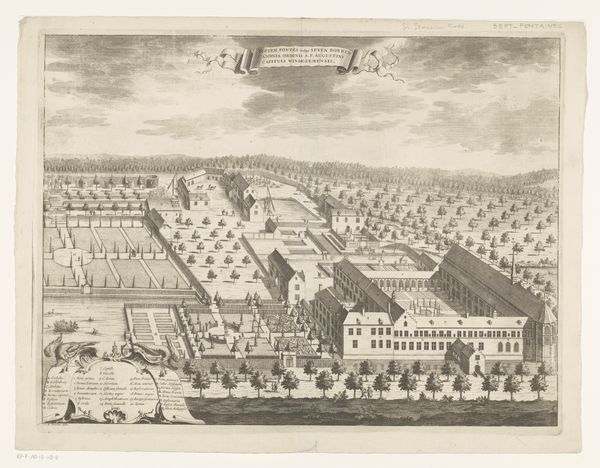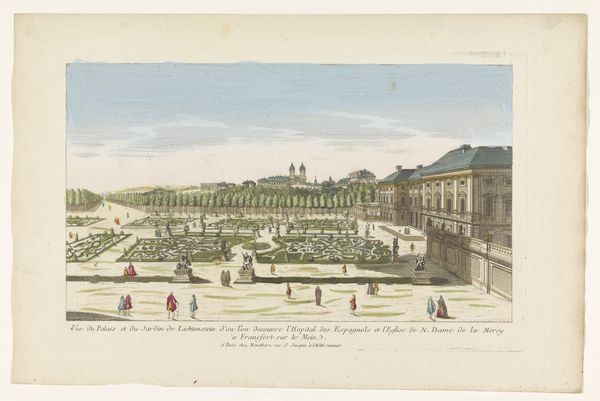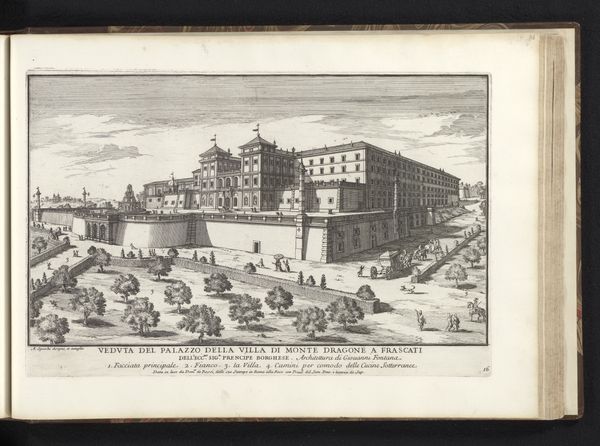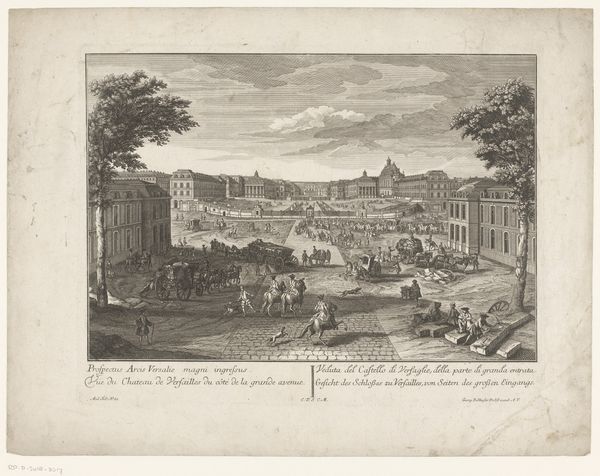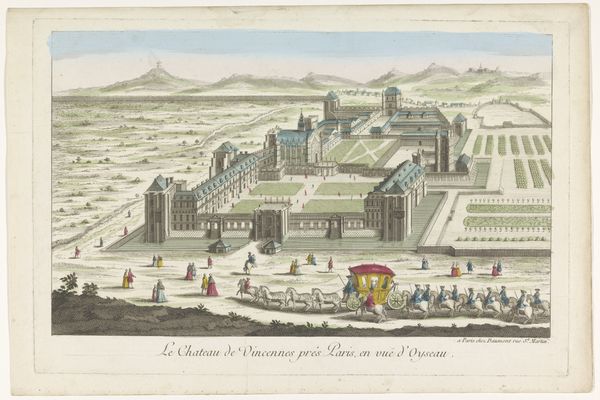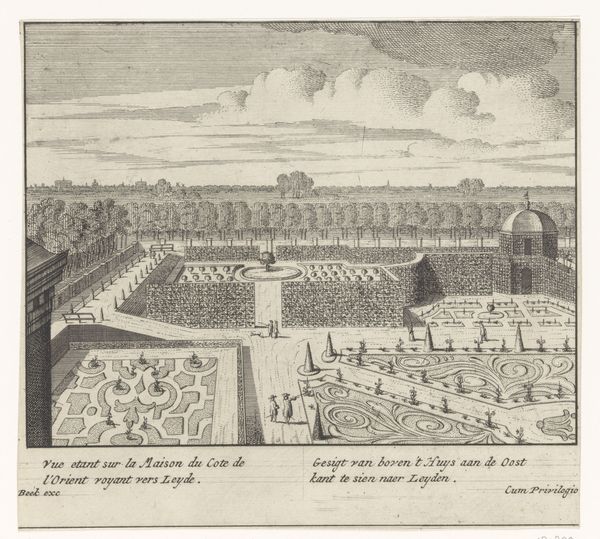
Gezicht op het Koninklijk Paleis en het klooster van de minderbroeders kapucijnen te Wroclaw 1742 - 1801
0:00
0:00
georgbalthasarprobst
Rijksmuseum
Dimensions: height 322 mm, width 446 mm
Copyright: Rijks Museum: Open Domain
Editor: So, we’re looking at “View of the Royal Palace and the Capuchin Friars Monastery in Wroclaw,” sometime between 1742 and 1801, by Georg Balthasar Probst. It's a print with watercolor. The first thing that strikes me is its formality, almost like a stage set. It's incredibly detailed, yet feels somewhat…flat. What do you make of it? Curator: Ah, yes! Flatness can be deceptive, can't it? This isn't trying to be photographic realism. It's about conveying information, a record of status, really. See how the artist painstakingly renders the geometric garden, the straight lines...it whispers of order, control. Almost like planting a flag, "Here is power, here is civilization!" Editor: So it's less about art and more about documentation? Curator: Well, I wouldn't discount its artistic value so readily. Think of the era – Baroque transitioning into Enlightenment. This blend gives us not just what *is* being represented but how things are meant to be seen! The slight exaggeration in the building heights, and the almost cartoonish figures? That’s the Baroque love for spectacle meeting the Enlightenment's drive for rational display. Does that make sense? Editor: Yes, the "how things are meant to be seen" really makes the point about the combination. I hadn't considered that aspect before. Thank you for that. Curator: The pleasure is all mine! These prints offer such intimate windows into how people wanted their world perceived. It's more a designed ideal than objective reality, you see.
Comments
No comments
Be the first to comment and join the conversation on the ultimate creative platform.
